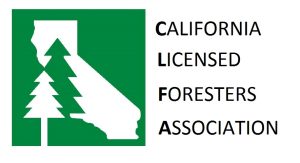sustainable forestry
Sustainable Forestry Consulting
Sustainable forestry consulting is an essential service that offers ecological and economically viable solutions to ensure the long-term health of forests. At Falk Forestry, we provide sustainable forestry consulting services that help landowners and forest managers make informed decisions about their natural resources.
Our team of experts specializes in implementing sustainable forestry practices that are designed to optimize forest growth, promote biodiversity, reduce carbon emissions, and promote erosion control.
We believe in promoting environmentally sound practices across all aspects of the forestry industry.
Sustainable Forestry Services for a Greener Future
Our sustainable forestry consulting services cover a range of areas, including forest management planning, timber inventory assessments, wildlife habitat assessments, and invasive species management. We work closely with clients to develop customized plans that align with their specific goals while adhering to industry standards for responsible forest management.
Our approach emphasizes collaboration with stakeholders in the local community to ensure that our efforts benefit both the environment and economy.
Forest Management Planning
timber inventory assessments
wildlife habitat assessments
invasive species management
Forest Restoration
Benefits of sustainable forestry practices
- Forestry Mulching
- Invasive Species Removal
- Erosion Control
- Increase Soil Fertility
- Promote Biodiversity
Forestry mulching is an eco-friendly alternative to traditional methods like bulldozing or burning, which can harm the environment by releasing harmful pollutants into the air and soil. With this method, our team can selectively remove invasive species and underbrush while leaving behind larger trees that contribute to a healthy forest ecosystem.
Additionally, forestry mulching provides several other benefits such as erosion control and increased soil fertility, which are essential for restoring degraded lands back into functional ecosystems capable of supporting diverse plant and animal life.
Our team of experts specializes in implementing sustainable forestry practices that are designed to optimize forest growth, promote biodiversity, and reduce carbon emissions.
Wildfire Reforestation
Wildfire is a natural occurrence that has been happening for millions of years. It is essential in maintaining the balance and health of our forests, as it helps clear out dead trees and underbrush, allowing new growth to flourish. Wildfires also help recycle nutrients back into the soil, which leads to healthier vegetation.
As we face more frequent and intense fires due to climate change, it’s crucial that we take steps toward reforestation efforts. Planting new trees in areas affected by wildfires can help restore ecosystems and prevent soil erosion. Reforestation not only enhances biodiversity but also benefits local economies by providing job opportunities for those involved in the planting process.
The impact of wildfires on our communities cannot be overstated.
Mastication Forestry
Forest mastication offers several forestry management advantages, such as enhancing the health of forests, minimizing the risk of wildfires, and creating better habitats for wildlife. By eliminating excessive shrubs and trees that overcrowd the forest, the remaining trees will no longer have to compete for soil and nutrients, while shrubs near the ground will receive more sunlight. Compared to other land-clearing techniques, mastication has the added benefit of leaving the soil almost undisturbed without uprooting roots or damaging the natural soil in the region.
The most natural and least invasive method of forest fuel reduction is forest mastication. This technique, also known as mulching, is a type of vegetation management that minimizes soil disturbance. Removing forest fuels through mastication is crucial to mitigate the risk of devastating wildfires. In the event of a fire, prior mastication can significantly decrease its impact and severity, safeguarding nearby properties and homes.
Fire Fuel Reduction
Surface vegetation such as grasses, shrubs, and fallen leaves act as fuel for wildfires. When these areas are left unmanaged, they can pose a significant threat to the environment and human communities. Fire fuel reduction is one of the most effective ways to mitigate this risk.
At our company, we provide environmentally responsible, long-term solutions for fire fuel reduction. Our team of experts uses advanced techniques and equipment to reduce surface fuels in a safe and controlled manner. By removing excess vegetation in high-risk areas, we help prevent wildfires from spreading and causing damage.
Our approach also takes into account the preservation of ecological balance. We use methods that do not harm wildlife habitats or disrupt natural ecosystems. Our goal is to create healthy forests that can withstand fire incidents while maintaining their natural beauty and sustainability.
Fuel Breaks
As fires become more frequent and devastating, the need for effective fire prevention measures has never been greater. One of the most critical factors in controlling fires is creating fuel breaks- areas where vegetation has been removed to reduce the amount of flammable material available to burn. In recent years, there has been a growing recognition that effective fuel breaks are essential to protect both homes and government properties from wildfires.
At our company, we specialize in providing property-saving fuel breaks that greatly reduce fire risk for both residential and government landowners. Our machines have a 100-gradeability for tack, ensuring reliable performance even in challenging terrain or adverse weather conditions. The result is an unparalleled level of safety and protection against wildfire threats.
Our approach to creating fuel breaks emphasizes an integrated strategy that combines mechanical clearing with natural barriers like rock outcroppings or waterways.
Environmental Studies
Our team includes experts in soil health, forestry management, and fire ecology who bring years of experience to each project. They use cutting-edge technology and tools to gather data on everything from soil moisture levels to tree growth patterns. By combining this information with traditional ecological knowledge, they develop customized plans that consider the unique needs of each site. Whether it’s restoring degraded land or mitigating wildfire risk, we strive for solutions that are both practical and environmentally sustainable.
We are experts in forestry practices
Whatever the size of your project, we have answers to the questions you have and solutions to improving your land.


